Welcome to our website!
![]() The Institute of Australian Culture aims to provide a wealth of Australian cultural assets, so as to enable Australians to gain access to a wide range of resources about their nation’s history and heritage, and thereby gain a wider appreciation of Australian culture.
The Institute of Australian Culture aims to provide a wealth of Australian cultural assets, so as to enable Australians to gain access to a wide range of resources about their nation’s history and heritage, and thereby gain a wider appreciation of Australian culture.
All Australians are encouraged to browse through the materials provided here, to explore their nation’s heritage and history. The site includes a vast array of editorials, news items, obituaries, opinion pieces, poetry, songs, artworks, and various ephemera.
The IAC site has been developed especially as an academic resource, to benefit both students and teachers. It is hoped that students in particular will find this collection of materials to be of benefit to them for their educational studies and projects.
This venture is internet-based so as to enable the widest possible audience for this compilation of Australian resources.
The Institute of Australian Culture is a cultural institution which aims to provide educational and informative access to our nation’s culture, traditions, and way of life, incorporating an Australian perspective.
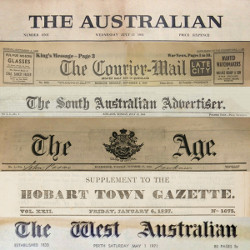
Articles
Numerous articles are provided on the site, covering a wide range of topics. The latest posts (of all types, not just articles) can be found here.
In many cases links are provided to online copies or scans of the original articles, so that people may examine the original items for themselves.
Where appropriate, corrections have been made to articles (to correct spelling or grammar, but not to change the substance of the text); in such instances, a notation is made at the end of the post to explain the exact nature of the corrections, giving both the original text and the corrected text. In this way, it is ensured that such articles are usable, as well as retaining their academic integrity. See the section “Minimisation of errors, and the site’s Text Style” (below) for more details.
Books
This site hosts the full text of various books and booklets of Australian literature, including both fiction and non-fiction. There are books of Australian history, novels, poetry, short stories, and songs.
Writers include: William Baylebridge (William Blocksidge), E. J. Brady, Erle Cox, C. J. Dennis, Louis Esson, Joseph Furphy, Grant Hervey, Lucy Everett Homfray, Charles Harpur, Rex Ingamells, Henry Kendall, Henry Lawson, John Lynch, Caroline Agnes Leane (Agnes Neale), Philip Durham Lorimer, Kenneth Mackay, “Dryblower” Murphy, John Shaw Neilson, Eva Oakley, John O’Brien (Patrick Joseph Hartigan), Bernard O’Dowd, Menie Parkes, “Banjo” Paterson, Marie E. J. Pitt, Ernest Scott, P. R. Stephensen, and Agnes L. Storrie (Agnes L. Kettlewell).
There are many more authors and books yet to be added to the collection.
Poetry and songs
Poetry and songs enable their writers to pour out their thoughts, feelings, and moods; but, more importantly, they allow others to partake in the wide range of emotions that they express.
The enjoyment of well-written verses, whether purely rhythmic of their own accord, or set to music, allows the wider public to share the experience with others.
With poetry, particularly in days gone by, this was done by reading aloud, or reciting from memory, select verses at family gatherings or public events. Although the popularity of poetry has waned in modern times, there is still an appreciation of poetry, whether it be for special occasions (especially solemn events) or for the big-name poets.
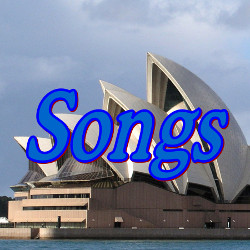 However, the general popularity of songs has been strong and ongoing, and they form a major part of popular culture; although, unlike in past years, the advent of communal singing occurs far less, as we are more likely to be entertained by recorded music rather than participate in communal sing-alongs. The modern era concentrates more on passive partaking of music, with far less emphasis on popular participation (listening to songs is the norm, rather than joining in with others).
However, the general popularity of songs has been strong and ongoing, and they form a major part of popular culture; although, unlike in past years, the advent of communal singing occurs far less, as we are more likely to be entertained by recorded music rather than participate in communal sing-alongs. The modern era concentrates more on passive partaking of music, with far less emphasis on popular participation (listening to songs is the norm, rather than joining in with others).
Nonetheless, poetry and songs form a major part of the reflection of a nation’s soul, and therefore this collection of Australian cultural creations includes a significant amount of verse.
Music videos
Links to a number of music videos have been included on this site, especially linking to videos on YouTube.
However, owing to the nature of that site, it is not unusual for videos to be taken down or accounts cancelled, and therefore such links lack permanency. This is especially unfortunate for those trying to promote interest in Australian culture, including popular culture.
Whenever possible, dead links will be replaced. If you see a link to a missing YouTube video, please leave a note in the comments section of the relevant article.
Graphics
Graphics for the site have been obtained from a wide variety of sources.
Many historical graphics will have blemishes, excrescences, marks, stains, or writing on them. In some cases, when time permits, touching up of graphics has been carried out (to remove some of the blemishes, etc.), so as to give a more accurate representation of what the original looked like (as well as to provide a more visually pleasant experience for site users).
In some instances the scanned graphics which accompany online newspaper or magazine articles are of such poor quality that they have not been included on the site. In some rare cases, another copy of the same graphic has been found elsewhere, and added to the article (these instances are noted in the “Editor’s notes” section of the relevant post).
Ephemera and miscellanea
It is intended that various types of ephemera and assorted miscellaneous items will be added to the site, including scans or photos of badges, certificates, coins, documents, leaflets, letters, postcards, stamps, and tokens.
Where appropriate, the text of the ephemeral items has been transcribed and added to the site.
These items should give an added depth to the understanding of a range of issues in Australian history, as well as providing some social context, personal interest, and images of Australian life (the latter two can especially be supplied by postcards).
Obituaries
It is intended to include various obituaries on this site; not only of famous artists, authors, military heroes, poets, sportspeople, and politicians, but also of ordinary people.
The intention is to especially include obituaries of old colonists and settlers.
Preferably the obituaries included will be those of a sizable nature, giving some details of the person’s life.
It is also intended to add various examples of obituary poetry; again, not only regarding famous Australians, but also regarding ordinary Australians.
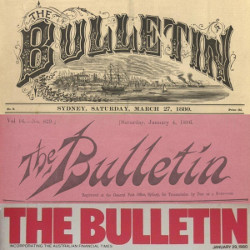
Notes regarding entries on the site
The sources for the vast majority of entries are cited, so that the accuracy of articles can be confirmed by anyone wishing to do so.
Most entries are taken directly from original or historic sources, usually newspapers or books; although there may be some instances where entries are taken from re-published sources, in which case these secondary sources are noted (and hopefully will be replaced by original sources when possible).
Editorial comments are usually provided at the start and/or end of entries, giving introductory or explanatory notes (and, occasionally, some relevant commentary).
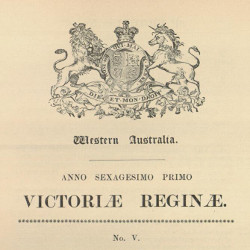
Minimisation of errors, and the site’s Text Style
As this is a large body of work, which has largely been sourced from scanned originals, it is possible that transcription errors may occur (hopefully, very rarely); in such a case, readers should feel free to leave a comment on the relevant post, describing the mistake, even if the error is minor or pedantic (although, first see the exceptions noted in this section).
When considered necessary, corrections will be made (this may be done to correct, for example, incorrectly spelt words, grammatical errors, and inconsistency of punctuation); however, any such corrections will be noted in the “Editor’s notes” at the end of the entry.
There are some exceptions to this situation. There are a number of circumstances where technical or pedantic changes are not included in the Editor’s Notes:
1) On those occasions where the historic print source has a) a gap in a word (presumably through a misprint in the publishing process), b) any letters printed upside down, or c) has punctuation missing (such as a full stop missing from the end of a sentence), then those errors may be corrected without notation. It should be noted that the equipment of the early printing presses in Australia were often bought second-hand, and therefore sometimes had badly-worn type, which could result in letters not appearing on the printed pages.
2) The spacing for punctuation may be rendered differently; older texts often included a space before colons, semi-colons, exclamation marks, question marks, etc., but such spacing may not be used here. Whereas Em Dashes (—) in historical texts commonly used no spacing on either side of the dash, spaces are normally inserted on the site (primarily so as to separate the text).
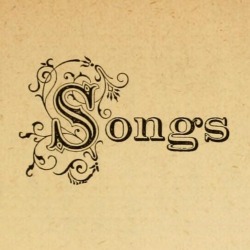 3) Capitalisation may be standardised for headings, sub-headings, and signatures. Generally, headings using all capitals (ALL CAPS), or initial letter capitals (Title Case), will be rendered as lower case except for the start of the sentence (Sentence case) and for proper nouns. However, some sub-titles using all capitals may be left as is, so as to distinguish them from the rest of the text (especially if they are not in a bold font). Minor titles (such as with entries extracted from a general news section) may be given a larger font, and separated from the text as a larger heading. Signatures using all capitals may be rendered into sentence case or left as is (especially when it is perceived that keeping the signatures in all capitals will be useful in distinguishing them from the rest of the text).
3) Capitalisation may be standardised for headings, sub-headings, and signatures. Generally, headings using all capitals (ALL CAPS), or initial letter capitals (Title Case), will be rendered as lower case except for the start of the sentence (Sentence case) and for proper nouns. However, some sub-titles using all capitals may be left as is, so as to distinguish them from the rest of the text (especially if they are not in a bold font). Minor titles (such as with entries extracted from a general news section) may be given a larger font, and separated from the text as a larger heading. Signatures using all capitals may be rendered into sentence case or left as is (especially when it is perceived that keeping the signatures in all capitals will be useful in distinguishing them from the rest of the text).
4) Text alignment is generally rendered as Left Alignment.
5) Graphics associated with an article may not be included, especially if the available graphic quality is very poor.
Aside from those aforementioned exceptions, readers are encouraged to leave a comment regarding any anomalies or errors, as we aim to be as accurate as possible.
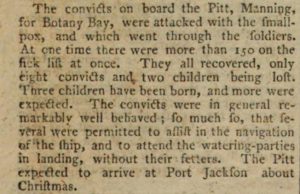
a) When considered appropriate, to enable ease of reading, the text of an article may separated into paragraphs (with a notation to that effect being placed in the “Editor’s notes”).
b) In those instances where an archaic long “s” (which looks like the letter “f”) has been used, they have been transcribed as a normal letter “s”.
c) Earlier articles on the IAC site did not usually include non-standard characters, but instead rendered them as standard characters, due to the inability of some early browsers to handle some non-standard characters. Later articles normally include those characters; however, the earlier articles will remain as is, unless there is a need or opportunity to revisit and reassess those articles. Types of non-standard characters include ligatures (e.g. Æ, æ, Œ, œ), as well as various diacritics, including accents, cedillas, and umlauts (e.g. â, ç, é, è, ê, ë, ï, ñ, ö, ü, ū).
Controversial items
Sometimes the subject matter of articles (or items, such as artistic images), or the opinions expressed therein, may be contentious or controversial; however, to achieve a full understanding of a society’s history and culture, we must be prepared to learn about ideas, events, and productions which we may disagree with, which may make us feel uncomfortable, or which we may consider to be offensive (including subject matter which may be considered blasphemous, racist, rude, or sexist). It is hoped that users of this site will have a high enough level of emotional maturity and intellectual open-mindedness as to be able to peruse articles and items of all types, including any containing subject matter which they may disagree with (no matter whether such disagreement is slight, moderate, or vehement).
Historical texts and items help us to understand the ideas, mindsets, and cultural outlooks of earlier generations (or sections thereof). History cannot be properly studied or fully appreciated if source materials and texts are censored; therefore, texts and images reproduced on the IAC site are not censored. However, it should be noted that some articles reproduced on this site were already censored in their original form (for example, the usage of dashes in the place of swear words).
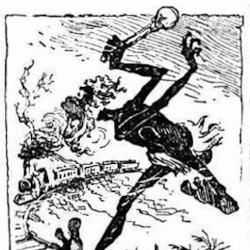 It should be understood that the views, opinions, and outlooks contained in the historical articles and items published on the IAC site are not necessarily those of the IAC, associated personnel, or associated organisations.
It should be understood that the views, opinions, and outlooks contained in the historical articles and items published on the IAC site are not necessarily those of the IAC, associated personnel, or associated organisations.
On the subject of censorship, with regards to modern commentary (such as comments contributed by users of this site), we reserve the right to censor or remove any commentary which is regarded as bullying, attacking other users, inappropriate, swearing, nasty, or trolling (much of which may be a subjective judgment). However, some poor or untoward language may be left as is depending on the circumstances (which is a judgment call); for example, a poem such as “The Bastard from the Bush”, which contains swearing, can be expected to have a commentary which may include swearing in the discussion of that poem or of poetry of a similar nature or style.
Controversy and censorship often bring forth strong opinions. However, on this site, it has been decided to faithfully reproduce texts and images without censorship, so as to enable a properly informed academic assessment and discussion of historical and cultural issues. We hope that the users of this site will understand and respect our position on such matters.
Sources
The institutions and sites from which scans of original materials have been sourced are normally noted in the tags appended to the posts; these include:
ArchiveOrg (Archive.org’s books and texts collection, USA) [link]
AWM (Australian War Memorial) [link]
CAPF (Colonial Australian Popular Fiction, University of Melbourne) [link]
GoogleBooks (Google Books, USA) [link]
HathiTrust (Hathi Trust Digital Library, USA) [link]
NLA (National Library of Australia) [link]
SLNSW (State Library of New South Wales) [link]
SLQld (State Library of Queensland) [link]
SLSA (State Library of South Australia) [link]
SLTas (State Library of Tasmania) [link]
SLV (State Library of Victoria) [link]
SLWA (State Library of Western Australia) [link]
Trove (the NLA’s online collection of materials) [link]
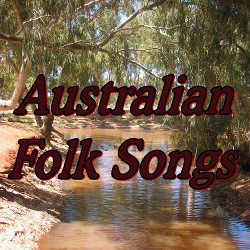 It should be noted that the usage of items from source institutions does not imply any endorsement, relationship, or understanding between the IAC and those institutions; nor does it imply any agreement with, or endorsement of, the artwork, expressions, text, or views contained in the articles, items, and subject matter which have been sourced from those institutions.
It should be noted that the usage of items from source institutions does not imply any endorsement, relationship, or understanding between the IAC and those institutions; nor does it imply any agreement with, or endorsement of, the artwork, expressions, text, or views contained in the articles, items, and subject matter which have been sourced from those institutions.
The growth of online collections of photographed and scanned materials has been an amazing development in the preservation of cultural and historical items. It should be acknowledged that the ongoing digitisation work being carried out by the National Library of Australia and the various Australian state libraries has been an enormous help to the building of this site; their joint creation of the Trove site has been an enormous boon for the promotion of Australian culture and history. Significant overseas sources include Archive.org, Google Books, and the Hathi Trust Digital Library.
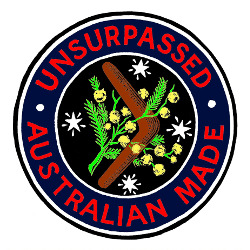
Website history
The IAC website was first created in October 2011. At that stage, the domain name was InstituteOfAustralianCulture [.com]. Although a lot of background work on posts and articles was being carried out in the early days, the first postings weren’t made until April-May 2012. On the site, the months of October 2011 to March 2012 were kept aside for administration postings (so to speak), with October 2011 having an Introduction (this post), January 2012 being used for IAC lists (lists are now created as needed, and are listed in the topics section), February 2012 being used for lists of Poetry and Songs (that policy continues), and March 2012 being used for lists of Humour (that policy continues).
The site went live in October 2012 (statistics for the site were activated on 31 October 2012). No publicity campaign was used at the time (nor since; at least not up to October 2023); awareness of the site has grown organically, mainly due to the appearance of the site’s posts in various search engines.
In 2015 the internet site’s domain name was changed from InstituteOfAustralianCulture [.com] to AustralianCulture [.org]. This step was taken so as to provide a shorter URL, on the basis that it should be easier for people to remember.
October 2022 marked the 10th anniversary of the public launch of the website of the Institute of Australian Culture.
Visits to the IAC site
The Institute of Australian Culture has had a lot of visitors to the site over the years, with people from all around the world looking at what the site has to offer.
For those who are interested, a list has been created of all of the countries from which hits on the IAC site have come from. See: Visits to the IAC site from various countries.
However, most of the hits on the site come from Australia, which is good; after all, the main purpose of this site is to provide an educational resource to Australians, to give information about Australia’s national culture, heritage, and history.
The Institute of Australian Culture
Heritage, history, and heroes.
Literature, legends, and larrikins.
Music, military, and miners.
Prose, poems, and poets.
Stories, songs, and sages.
Writers, workers, and wages.
Concluding remarks
Whether you are a student, teacher, researcher, or someone visiting the site out of general interest, we hope that you enjoy the resources provided.
Updated 20 November 2023
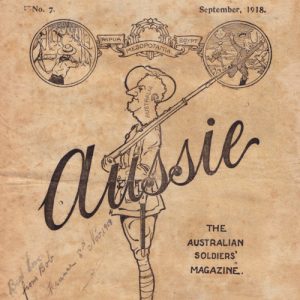
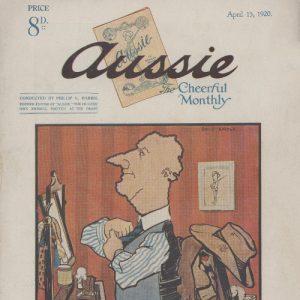
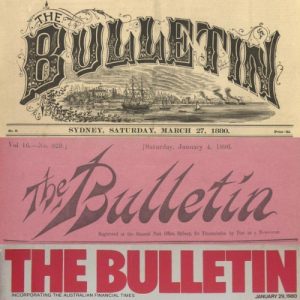
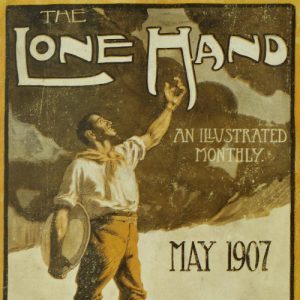
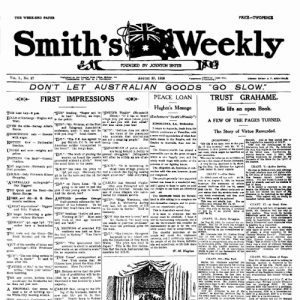
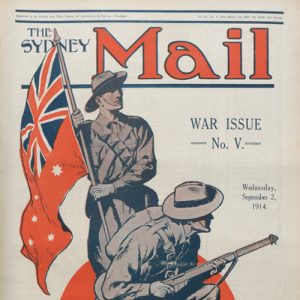
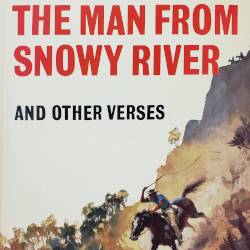
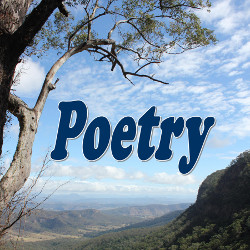

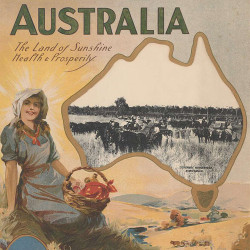
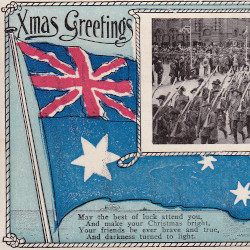
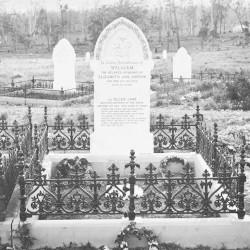
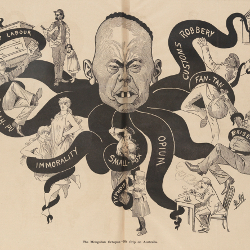


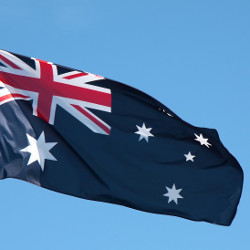
To whom it may concern
Your reference to The Groop is sparse and inaccurate.
The Groop was established by Peter McKeddie,Max Ross and Richard Wright and was signed by CBS records.This band was already well established with three charting singles and were the support act for Tom Jones and Hermans Hermits tour in 1966.
https://www.abc.net.au/news/2021-12-23/bin-day-out-for-mackay-man-and-neighbours-bin/100722498
A Bit of Aussie Fun. Merry Christmas
A friend of years ago had a poem about a bloke who had been short changed by a Salvation Army timekeeper. One verse (IIRC) went:-
“May that timekeeper stand in an Aunt Sally band
And blow till his eyeballs turn black.
May each note from his cornet turn into a hornet
And sting him for five and a zac”
Would that happen to be in your collection?
Regards
Ian
Unfortunately, despite several searches, no copy of that poem could be located. The only mention of it on the internet was a post by “Ian” (yourself?) on Joanne Nova’s site (https://joannenova.com.au/2021/11/weekend-unthreaded-389/).
Love your website and all things ‘strayan culcha and history.
As I travel this wonderful land on my own, in retirement – whether it’s on a wide open road or on a stock route, or winding up/down a mountain road somewhere along The Great Divide – in the High Country or the valleys, or out on the vast inland plains – whether I’m driving or getting along on “shanks pony”, I’ve set myself the task of learning and reciting some of the marvellous poetry gifted us by generations past. It not only gives me great pleasure and hopefully staves off dementia, but is a way back into the past, including my own childhood and school years. It’s also a portal to an Australia and it’s varied people and values that has all but disappeared.
Be I in the bush, or in the city or in a country town anywhere, or beside a creek or river, on top a mountain or just stopped somewhere random on the side of the road throughout this vast country, I’m reminded of the past and it’s all beautifully still there between the lines of a good Australian poem.
Have nailed 6 so far and presently working on number 7, John O’Brien’s “We’ll all be rooned said Hanrahan” from 1921, which I’m pleased to find within your body of works.
Just wanted to say thank you for your website which I’ll be exploring in the days and weeks ahead ….
Best wishes
Glenn Morrison
(Bondi NSW)
Great to read of your appreciation of the IAC site – thank you.
It’s nice to see that there’s still people out there who are learning Aussie poems for recitation.
Many thanks for your comment, and here’s hoping you find more items of interest on the site.
Regards, Ed.